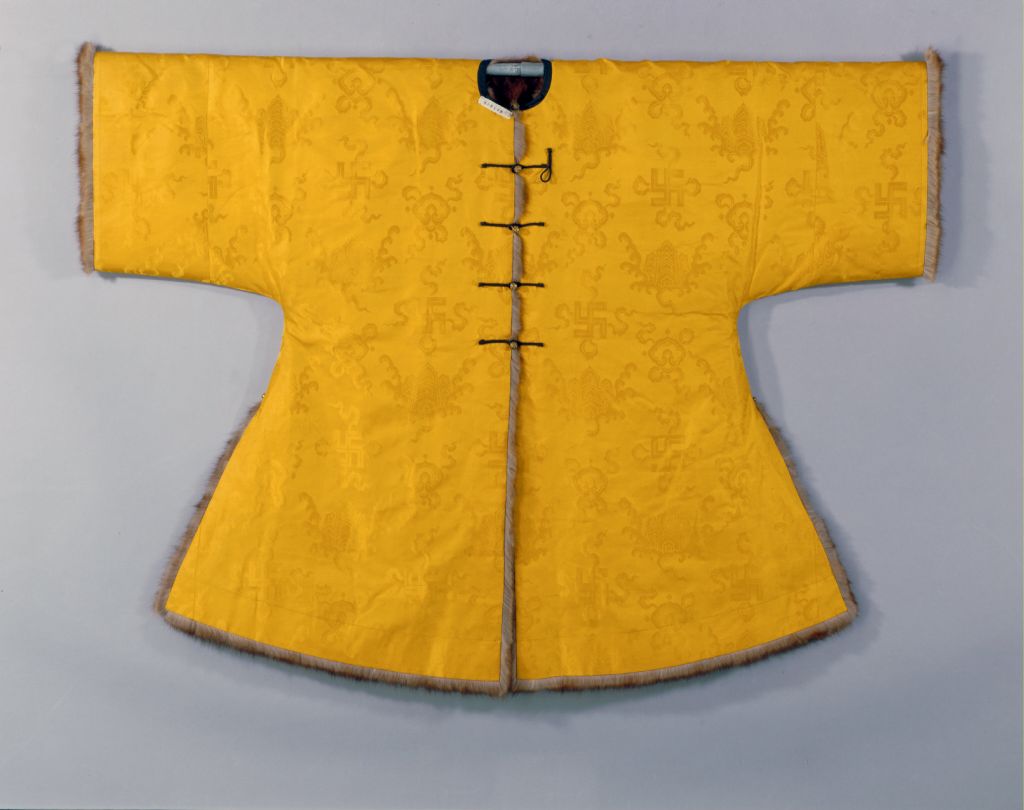“The Gurkha Emissary to Beijing” in the “Pingding Gurkha War Illustrated Books”
The Gurkha Emissary to Beijing “in the” Pingding Gurkha War Illustrated Books “, Emperor Qianlong of the Qing Dynasty, anonymous painting, paper edition, color setting, length 55.3 cm, width 91.4 cm
On the upper part of the painting, the Emperor Qianlong inscribed the poem “Gurkha Accompanying His Officials to Beijing”, with the following inscription: “Guichou Xinzheng’s Imperial Brush.” With the seal of two Zhu Wenfang seals, “Eight Symbols and Eight Concepts”, “Self improvement”, and “Qianlong Appreciation” with the white text round seal. The initials are sealed with the seal of Zhu Wenfang, the “Treasure of the Supreme Emperor”, and the seal of Zhu Wenfang, the “Precise Seal of the Sanxi Hall”, and the seal of Bai Wenfang, the “Suitable Descendants”, is sealed with the seal of the Qing Dynasty’s internal government. “Guichou” refers to the 58th year of Qianlong (1793), when Emperor Qianlong was 83 years old
The picture shows that a treasure tent was erected in front of the Ziguang Pavilion, and the envoys from Gurkha had already knelt on the ground to welcome the arrival of Emperor Qianlong. Under the gaze of everyone, Emperor Qianlong arrived leisurely on a walking chariot, revealing his supreme demeanor
Gurkha (now Nepal) is located in the southwest of Tibet, China, and its territory is crisscrossed with Tibet. In the 53rd year of Qianlong’s reign (1788), when Gurkha troops invaded Houzang, Bazhong, the valet of the Imperial Court, concealed the imperial court and agreed to a contract between Garong and Gurkha to withdraw troops and pay for the war. Three years later, on the pretext that his debts had not been cleared, Gurkha dispatched troops to Tibet again. This time, they were severely attacked by the Qing army, and this battle became the last of Emperor Qianlong’s “Ten Great Martial Arts”. Emperor Qianlong ordered court painters to create a volume of “The Battle of Pingding Gurkha” in accordance with the usual practice, in order to commend the expedition soldiers from the 56th to 57th years of Qianlong (1792-1793) and promote the martial arts of the Qianlong Dynasty< This album consists of 8 sections, showcasing major battles such as "conquering Momu" and "conquering Magarqa", as well as Emperor Qianlong's "Gurkha envoys to Beijing" during his meeting with Gurkha envoys at Ziguangge. Due to the fact that each picture depicted in the atlas has its own evidence and is basically in line with historical facts, it has extremely important historical value
![图片[1]-The Illustrated Book of the Battle of Gurkha: Gurkha’s Emissary to Beijing-China Archive](https://chinaarchive.net/Warring States period/painting/54332.jpg)
![[Qing Dynasty] British female painter—Elizabeth Keith, using woodblock prints to record China from the late Qing Dynasty to the early Republic of China—1915-China Archive](https://chinaarchive.net/wp-content/uploads/2022/11/image-191x300.png)




